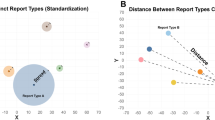Abstract
Data overload is a burgeoning challenge for the medical imaging community; with resulting technical, clinical, and economic ramifications. A primary concern for radiologists is the timely, efficient, and accurate extraction of imaging and clinical data, which collectively are essential in determining accurate diagnosis. In current practice, imaging data retrieval is limited by the fact that imaging and report data are de-coupled from one another, along with the non-standardized and often ambiguous free text data contained within narrative radiology reports. Clinical data retrieval is equally challenging and flawed by the lack of information system integration, paucity of clinical order entry data, and diminished role of the technologist in providing clinical data. These combined factors have the potential to adversely affect radiologist performance and clinical outcomes by diminishing workflow, report accuracy, and diagnostic confidence. New and innovative strategies are required to improve and automate data extraction and presentation, in a context- and user-specific fashion.
Similar content being viewed by others
References
Reiner BI, Krupinski E: The insidious problem of fatigue in medical imaging practice. J Digit Imaging 25:3–6, 2012
Ash JS, Berg M, Coiera E: Some unintended consequences of information technology in health care: the nature of patient care information system-related errors. J Am Med Inform Assoc 11:104–112, 2004
Demner-Fushman D, Chapman WW, McDonald CJ: What can natural language processing do for clinical decision support? J Biomed Inform 42:760–772, 2009
Reiner B: Uncovering and improving upon the inherent deficiencies of radiology reporting through data mining. J Digit Imaging 109–118, 2010
Reiner BI, McKinley M: Innovation economics and medical imaging. J Digit Imaging 3:325–329, 2013
Schreiber MH: The clinical history as a factor in the roentgenogram interpretation. JAMA 185:399–401, 1963
Loy CT, Irwig L: Accuracy of diagnostic tests read with and without clinical information: a systematic review. JAMA 292:1602–1609, 2004
Berbaum KS, Franken Jr, EA, Dorfmann DD, et al: Tentative diagnoses facilitate the detection of diverse lesions in chest radiographs. Invest Radiol 21:532–539, 1986
Zalis ME, Barish MA, Choi JR, et al: CT colonography reporting and data system: a consensus proposal 1. Radiology 236:3–9, 2005
Miniati M, Prediletto R, Formichi B, et al: Accuracy of clinical assessment in the diagnosis of pulmonary embolism. Am J Respir Crit Care Med 159:864–871, 1999
Grenier P, Chevret S, Beigelman C, et al: Chronic diffuse infiltrative lung disease: determination of the diagnostic value of clinical data, chest radiography, and CT on Bayesian analysis. Radiology 191:383–390, 1994
Zhianpour M, Janghorbani M: Effect of clinical information on brain CT scan interpretation: a blinded double crossover study. MJIRI 17:173–177, 2003
Leslie A, Jones AJ, Goddard PR: The influence of clinical information on the reporting of CT by radiologists. Br J Radiol 73:1052–1055, 2000
McNeil BJ, Hanley JA, Funkenstein HH, et al: Paired received operating characteristic curves and the effect of history on radiographic interpretation: CT of the head as a case study. Radiology 149:75–77, 1983
Simons M, Parker JA, Donohoe KJ, et al: The impact of clinical data on interpretation of thallium scintigrams. J Nucl Cardiol 1:365–371, 1994
Berbaum KS, Franken Jr, EA, El-Khoury GY: Impact of clinical history on radiographic detection of fractures: a comparison of radiologists and orthopedists. AJR 153:1221–1224, 1989
Reiner BI, Siegel EL, Knight N: Radiology reporting: past, present, and future: the radiologist perspective. J Am Coll Radiol 5:313–319, 2007
Boonn WW, Langlotz CP: Radiologist use of and perceived need for patient data access. J Digit Imaging 22:357–362, 2009
Author information
Authors and Affiliations
Corresponding author
Rights and permissions
About this article
Cite this article
Reiner, B. Strategies for Medical Data Extraction and Presentation Part 1: Current Limitations and Deficiencies. J Digit Imaging 28, 123–126 (2015). https://doi.org/10.1007/s10278-015-9769-5
Published:
Issue Date:
DOI: https://doi.org/10.1007/s10278-015-9769-5




